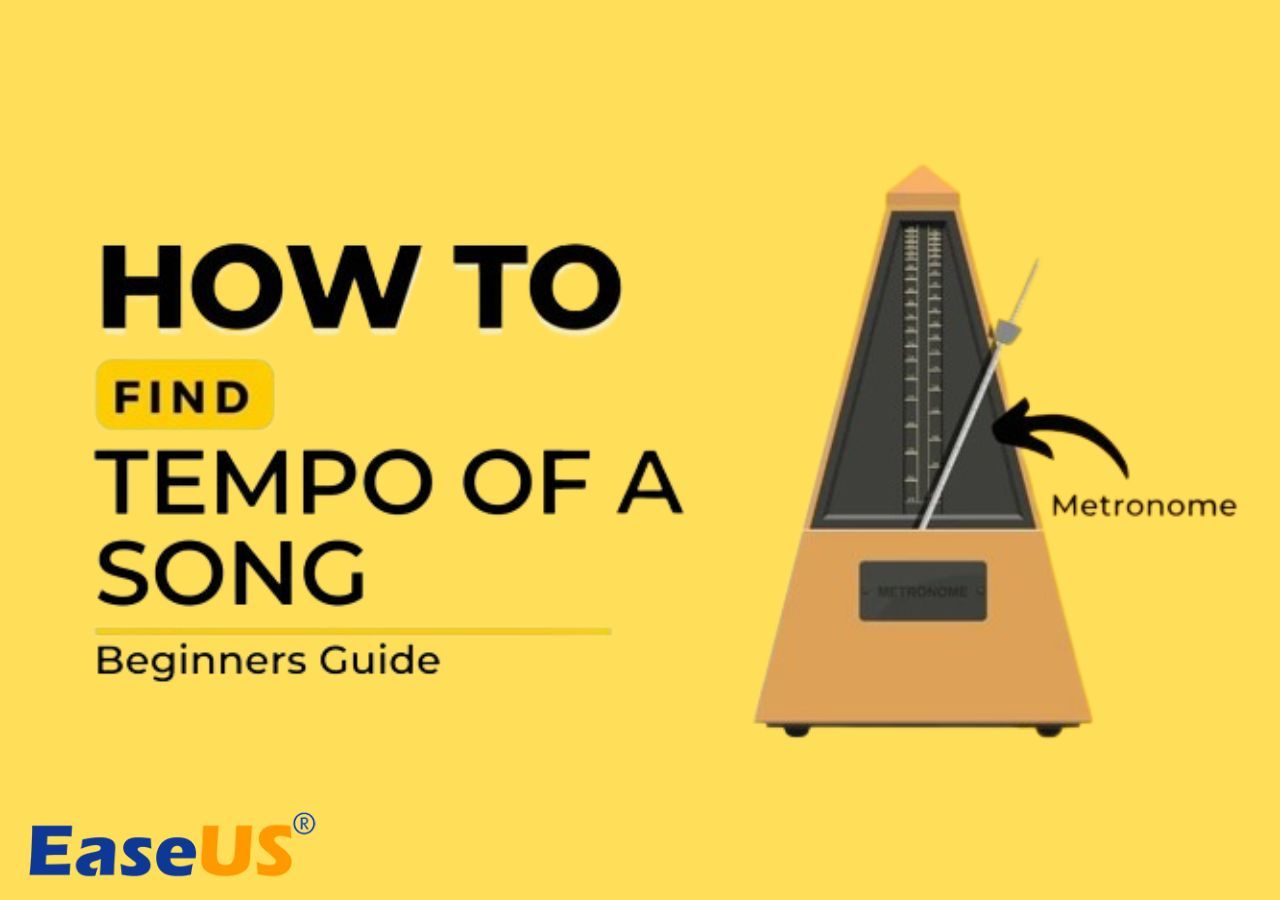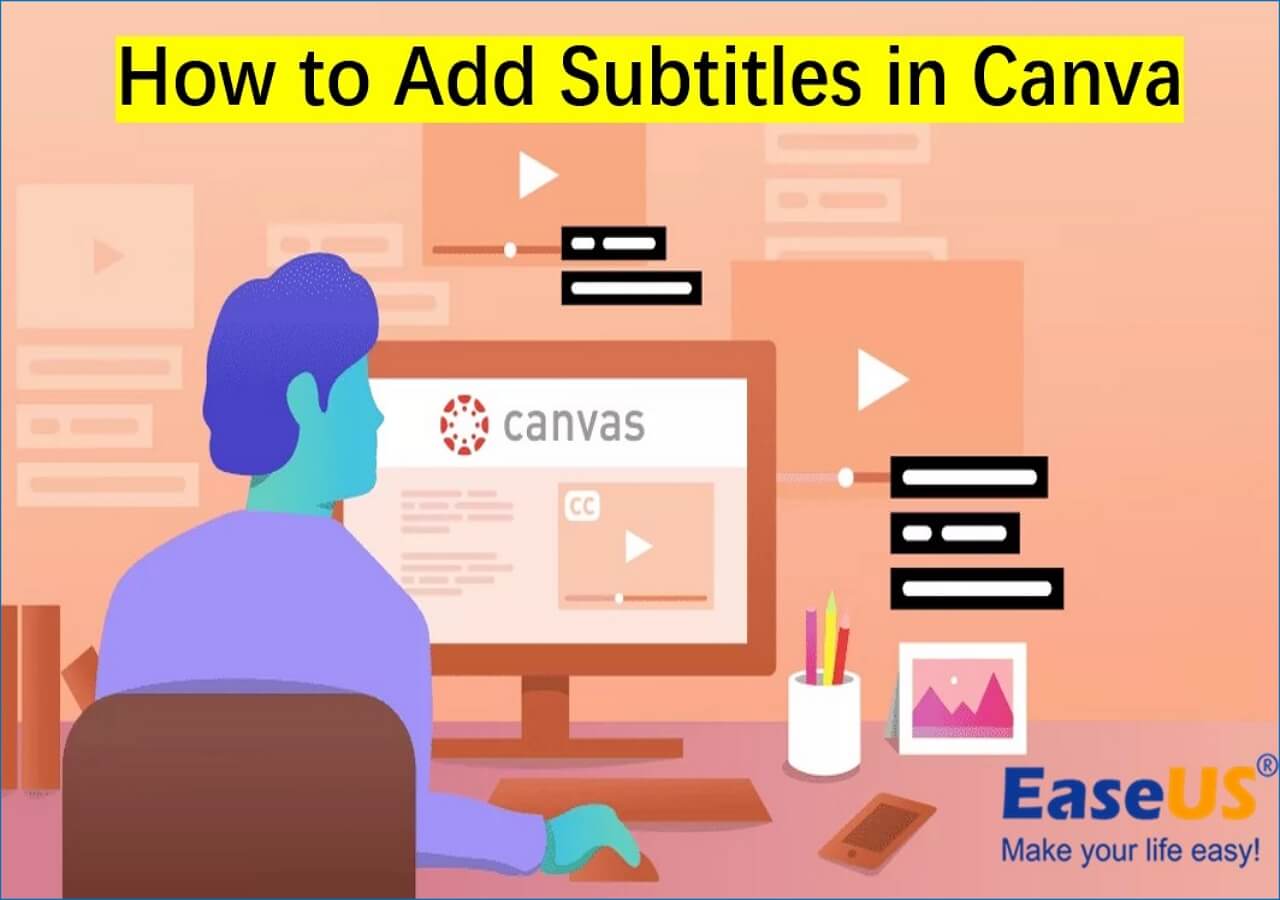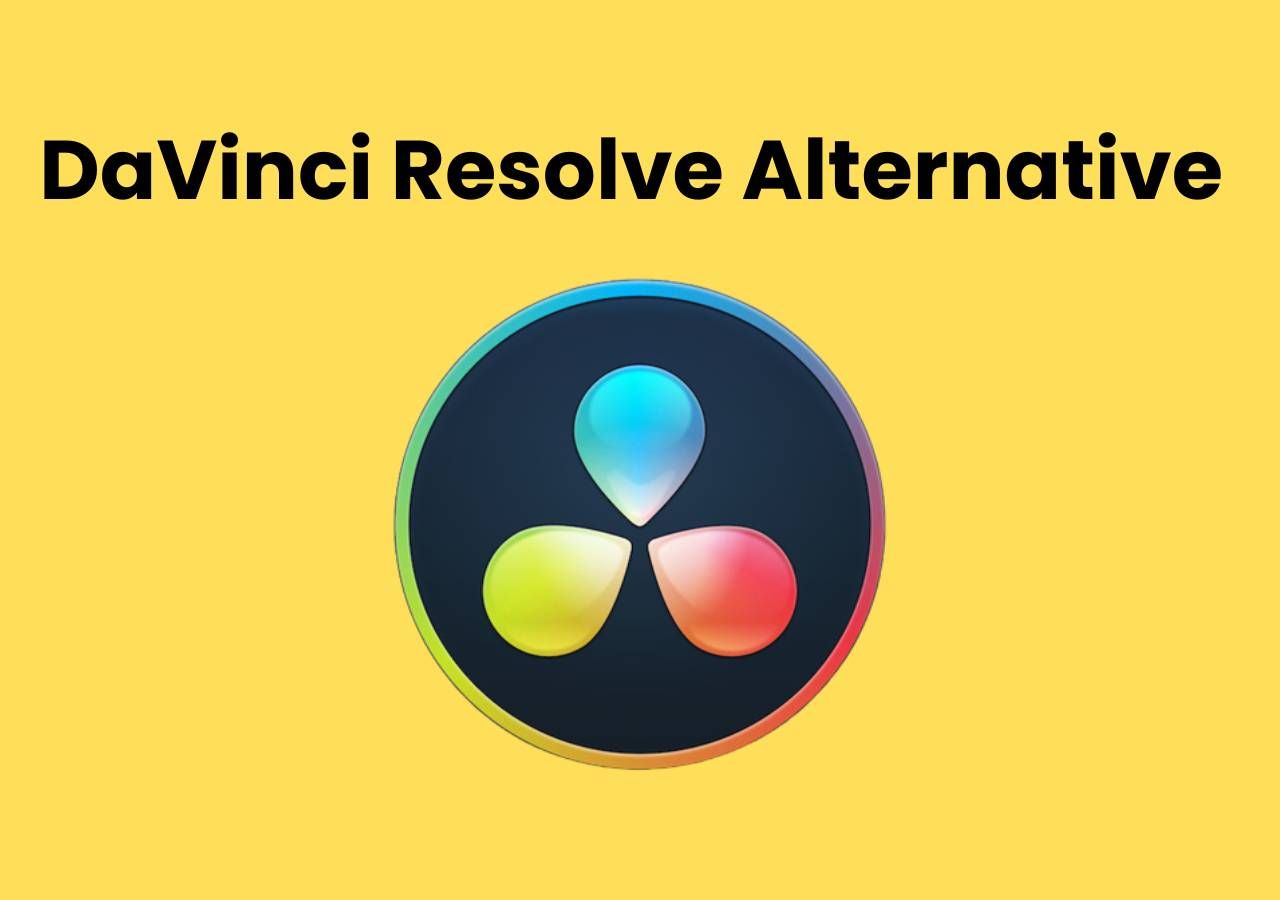-
Jane is an experienced editor for EaseUS focused on tech blog writing. Familiar with all kinds of video editing and screen recording software on the market, she specializes in composing posts about recording and editing videos. All the topics she chooses are aimed at providing more instructive information to users.…Read full bio
-
![]()
Melissa Lee
Melissa Lee is a sophisticated editor for EaseUS in tech blog writing. She is proficient in writing articles related to screen recording, voice changing, and PDF file editing. She also wrote blogs about data recovery, disk partitioning, data backup, etc.…Read full bio -
Jean has been working as a professional website editor for quite a long time. Her articles focus on topics of computer backup, data security tips, data recovery, and disk partitioning. Also, she writes many guides and tutorials on PC hardware & software troubleshooting. She keeps two lovely parrots and likes making vlogs of pets. With experience in video recording and video editing, she starts writing blogs on multimedia topics now.…Read full bio
-
![]()
Gloria
Gloria joined EaseUS in 2022. As a smartphone lover, she stays on top of Android unlocking skills and iOS troubleshooting tips. In addition, she also devotes herself to data recovery and transfer issues.…Read full bio -
![]()
Jerry
"Hi readers, I hope you can read my articles with happiness and enjoy your multimedia world!"…Read full bio -
Larissa has rich experience in writing technical articles and is now a professional editor at EaseUS. She is good at writing articles about multimedia, data recovery, disk cloning, disk partitioning, data backup, and other related knowledge. Her detailed and ultimate guides help users find effective solutions to their problems. She is fond of traveling, reading, and riding in her spare time.…Read full bio
-
![]()
Rel
Rel has always maintained a strong curiosity about the computer field and is committed to the research of the most efficient and practical computer problem solutions.…Read full bio -
![]()
Dawn Tang
Dawn Tang is a seasoned professional with a year-long record of crafting informative Backup & Recovery articles. Currently, she's channeling her expertise into the world of video editing software, embodying adaptability and a passion for mastering new digital domains.…Read full bio -
![]()
Sasha
Sasha is a girl who enjoys researching various electronic products and is dedicated to helping readers solve a wide range of technology-related issues. On EaseUS, she excels at providing readers with concise solutions in audio and video editing.…Read full bio
Content
0 Views |
0 min read
Very few people know that subtitles and closed captions are distinct, not entirely, but to an extent. Adding subtitles to MP4 videos allows you to reach a wider audience and closed captions for people with hearing problems. Most people think both are interchangeable due to their similarities, but understanding their differences will help you narrate your stories or content on video with appropriate options.
But what is the difference between subtitles vs. closed captions, when to use them, and how to add captions to YouTube videos, Instagram, and movies? Find everything in this article in detail.
Subtitles vs. Closed Captions: Major Differences
The subtitles and captions are timed text solutions to make the videos accessible to all audiences. Find the meaning and the difference between these two texts to know what separates them.
Subtitles [SUBS]
1. What are subtitles?

Subtitles came into existence in the 1930s, when silent films transitioned into talkie films. They provide a textual translation of the videos' languages to accommodate foreign language audiences who are not familiar with the language in the film. There are also open-source subtitle generators available, and you can choose based on your specific needs.
2. What does it contain, and what is its type?
Subtitles may appear in various styles, but they often appear in white or yellow color outlines in black. Now, let us see the types of subtitles you can see on your video.
- Subtitles for the D/deaf and hard of hearing (SDH): These are designed for users who cannot hear the dialogue and audio. It typically includes information about sound effects, speaker identity, music, etc., along with the text translation of an unknown language.
- Non-subtitles for the d/Deaf and hard of hearing (non-SDH): These are just subtitles, meaning text information for those who can hear but do not understand the on-screen language.
- Forced Narrative (FN): FN subs are generally used as overlaid subtitles to clarify the on-screen dialogue, graphics, or any information that is explained partially. Usually done while explaining cultural things of unknown places.
3. Who is the target audience?
The inclusion of subtitles is generally to widen the reach of the video. There are many languages in the world, and as the accessibility to the internet grows, the makers want to add subtitles on Tiktok, YouTube, social media, and movies to reach a larger audience. The subtitles help you overcome the language barrier.
4. When to use it?
Subs are typically used when the video makers or producers assume the viewer is unfamiliar with the language in the video. Here are some indicators to use the subtitles:
- To improve accessibility for non-language viewers.
- To improve the video SEO on OTT platforms.
- When only a few people speak the video language, makers add subtitles to video in VLC.
Closed Captions [CC]
1. What are closed captions?

Closed Captions, introduced in the early 1970s, transcribe the dialogue along with the scene in the same language. If a deaf or a person with hearing impairments wants to watch videos, it prompts the makers to add close captioning to a video.
2. What does it contain, and what is its type?
Captions are of two types: open and closed. The open captions are burned into the video and cannot be turned on, whereas the closed captions can be turned on and off by the viewer. There are two types of captions.
- 608 Captions (Line 21, CEA-608, or EIA-608): Typically used to caption the standard analog TV. These captions do not support customization or appearance.
- 708 Captions (CTA-708, CEA-708, or EIA-708): Especially introduced for captioning digital TVs. You can change the appearance and customize the captions. They are not supported on analog TVs.
3. Who is the target audience?
The closed captions are not for any target audience but for people with hearing impairments or issues. The idea is to provide information about the scene and its emotions, along with textual information. The CCs contain background music, narrator identity, music, actions, etc in the video content.
4. When to use it?
Closed captions are introduced to cater to deaf communities to perceive background sounds and music, speaker identity, and other audio cues. There is also a law in ADA (Americans with Disabilities Act) to make captioning a default in content settings. The law soon became a mandate, and the CCs were burned or added to all the TV series aired.
Closed Captioning vs. Subtitles at a Glance
It is hard to compare the closed captions and subtitles due to the minute difference. But here's a simple breakdown of both to give you a much clearer view.
| Feature🎆 | Closed Captions📹 | Subtitles📺 |
| Text Transcribed | Yes | Dialogue only |
| Audience Assumption | D/deaf and hard of hearing | May or may not hear the audio (SDH and Non-SDH) |
| Speaker Identity | Yes |
Sometimes |
| In source language | Yes | No |
| Music and Sound effects | Yes | No |
| Can be turned on/off | Yes | Yes |
| Appearance | While the text on the black box; 32 characters per line |
With or without the black box; 42 characters per line |
Subtitles vs. Closed Captions: Which Is Better
What is better between Subtitles and Closed Captions will depend on various nuances. It will majorly depend on the type of target audience. If we try to break it down, here's what one can assume while choosing between Subs and CCs.
Subtitles are for viewers who can hear the audio but do not understand the language, whereas closed captions provide a way for viewers who cannot watch the video with the text and nuances in the video. CCs are a translation of the same language, and the subtitles are of a different language.

One might also feel that the CC and SDH are almost the same, but they are not. The CCs are designed to accommodate D/deaf and hard-of-hearing audiences of the same language, while the SDH is to accommodate D/deaf and hard-of-hearing audiences who cannot understand the language.
Both the timed text files are to improve the accessibility for various audiences. Some find them distractive, and some find them useful, but the ability to keep them on/off makes a huge difference for many users.
Add Closed Captions and Subtitles to Videos
Adding the proper subtitles and closed captions to videos at the correct time intervals improve the reach of your video. EaseUS VideoKit is an all-in-one video and audio editor capable of generating subtitles and captions for videos. This AI-powered tool offers video converting, compressing, noise reduction, voice removal, video editing, and many more tools to be the best video editor available on the market. It features:
- AI-powered speech-to-text analysis
- Create and edit SRT file
- Subtitle stylization as needed
- Automatic generation of subtitles and captions for videos
Its analysis automatically identifies the vocals and produces video subtitles. You can also open SRT file, export the subtitles in SRT or TXT files, and share them. Along with generation, you can also customize the font styles, text color, background color, and position of the text.
With all the excellent editing options and the best auto subtitle generator features, EaseUS VideoKit aims to be a complete video player and editing tool for both novice and professional users.
Here's a guide to adding subtitles to videos in EaseUS VideoKit.
Step 1. Open EaseUS VideoKit and find the "Subtitle Generator" panel.

Step 2. Click "Choose File" or drag the YouTube video file to the interface.
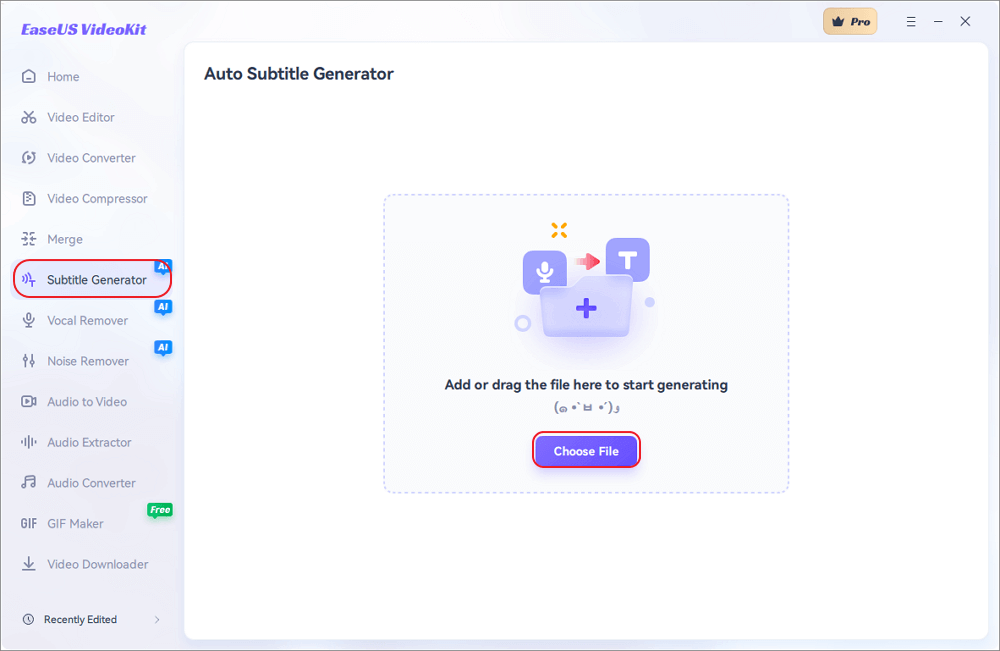
Step 3. Wait for the AI analyzing.
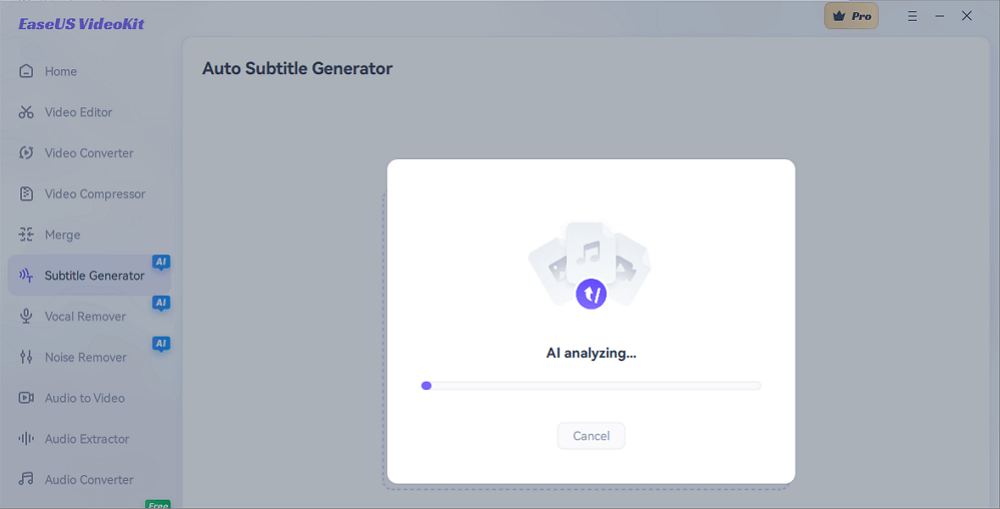
Step 4. Click the "Text" button to change the text, or customize font, background, and position under "Style" menu.
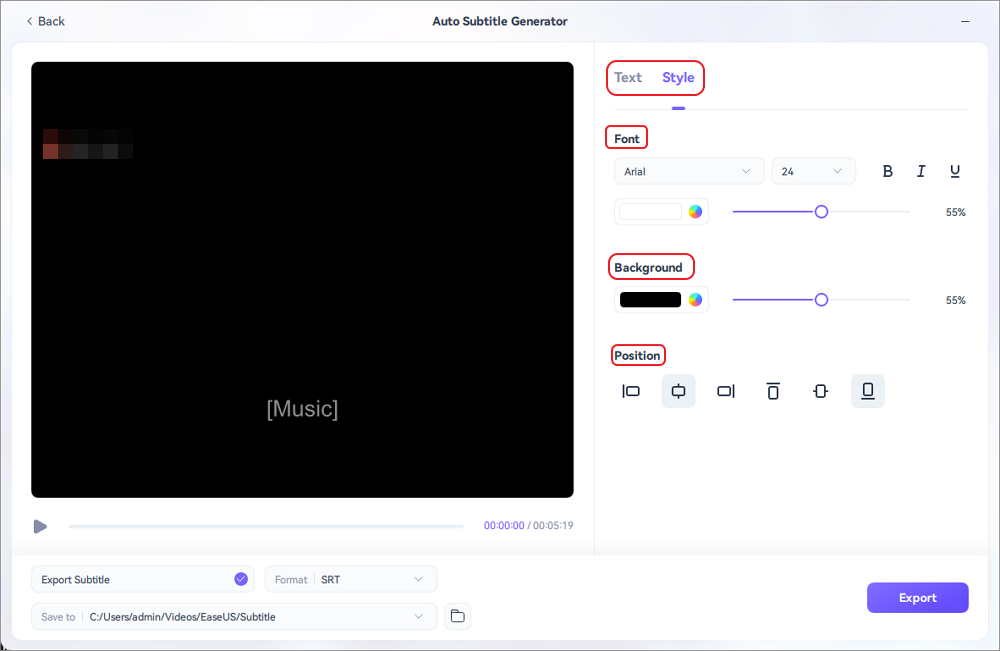
Step 5. Click "Export Subtitle" to select exported subtitle format, "Save to" to change location, and press "Export" to export the video with subtitles.
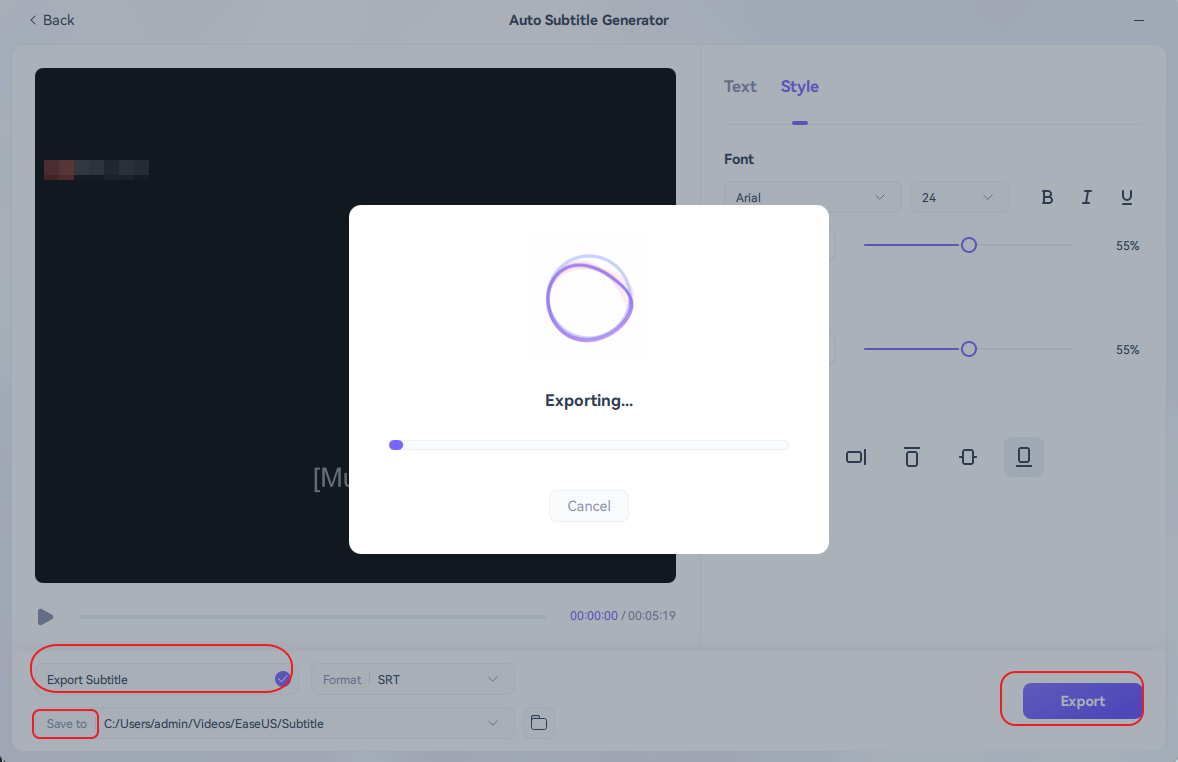
Final Words
To conclude the debate subtitles vs. closed captions, Subtitles are for people who can hear but do not understand the language, and Close Captions are for those who cannot hear and need transcriptions of audio and background. The usage depends on the context, need, and audience.
However, both the subtitles and closed captions improve the accessibility for the users. And an automatic subtitle generator like EaseUS VideoKit to generate subs and CCs for your videos. This software can be perfect for audio and video editing to make professional videos. If you like the content, please share it with your friends.
FAQs About Subtitles vs. Closed Captioning
Here are some of the most frequent FAQs asked on Subtitles vs. Closed Captions. If you have similar queries hope this will help you. Hope it helps.
1. Why are subtitles called closed captions?
This norm often arises because the captions are not visible until you turn them on using the settings. The other reason is when the subtitles are embedded into the video, called closed captions.
2. Are subtitles the same as closed captioning on Youtube?
No, This depends on the user who is uploading the video. If the user intends to make the videos for people who are deaf, they are called closed captions; if they are for users who cannot understand the language, they are called subtitles.
3. What is the difference between English subtitles and English CC on Netflix?
The English Captions [CC] are transcriptions of the dialogue for the users who cannot hear, whereas the English subtitles are for those who do not understand the language spoken in the video. But recently, the subtitles also include transcriptions to help the viewer.

